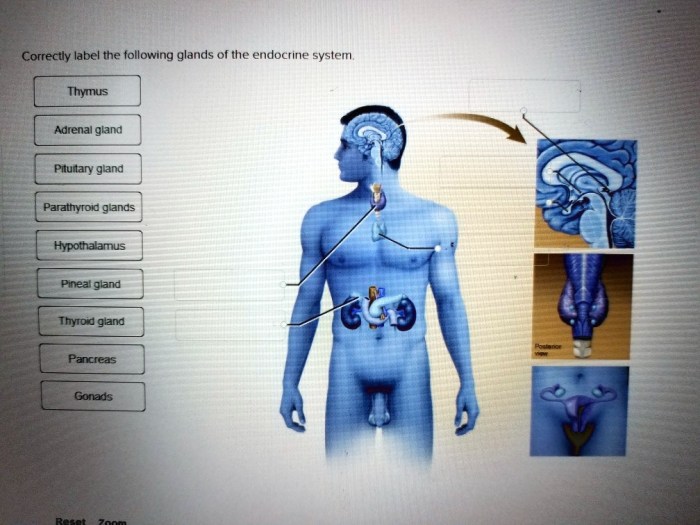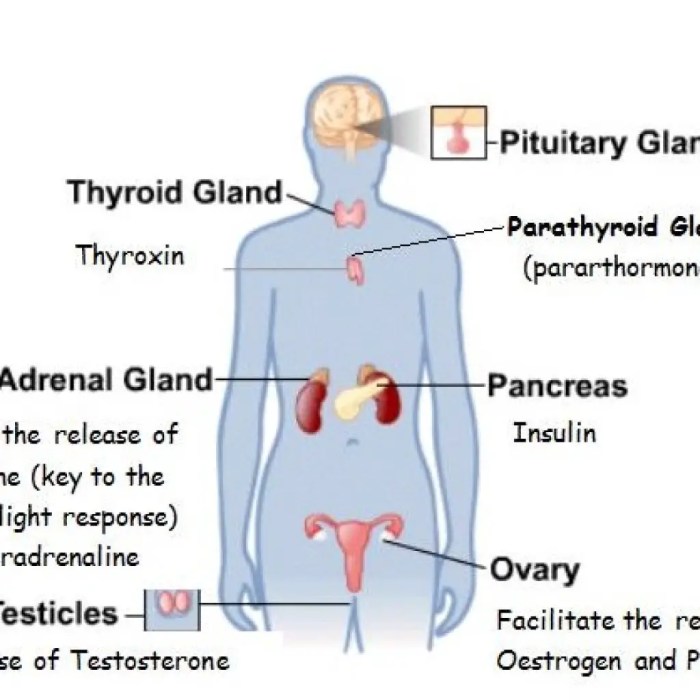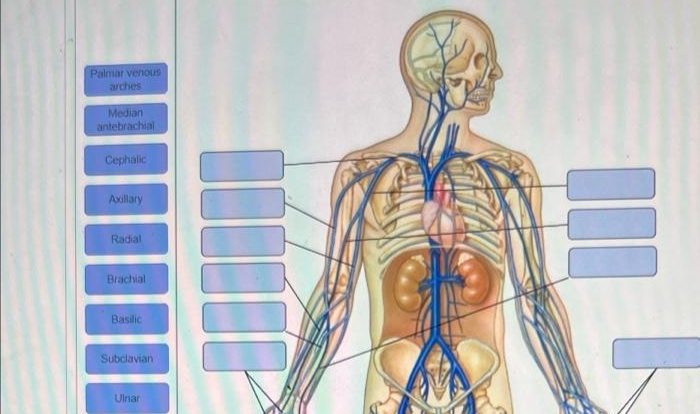Correctly label the following glands of the endocrine system – Correctly labeling the glands of the endocrine system is paramount to understanding its intricate functions and maintaining hormonal balance. This guide delves into the identification, classification, and significance of these glands, providing a comprehensive overview for students, healthcare professionals, and anyone seeking to unravel the complexities of the endocrine system.
Endocrine Glands: Identification and Labeling

The endocrine system consists of specialized glands that secrete hormones directly into the bloodstream, regulating various physiological processes. Understanding the location, structure, and functions of these glands is crucial for comprehending the intricate workings of the endocrine system.
Identification of Endocrine Glands
The endocrine system encompasses numerous glands distributed throughout the body, each with distinct functions:
- Pituitary Gland:Located at the base of the brain, it produces hormones that control growth, metabolism, and reproduction.
- Pineal Gland:Situated deep within the brain, it secretes melatonin, which regulates sleep-wake cycles.
- Thyroid Gland:Found in the neck, it releases hormones that control metabolism and growth.
- Parathyroid Glands:Small glands located near the thyroid, they produce hormones that regulate calcium levels in the blood.
- Adrenal Glands:Situated atop the kidneys, they secrete hormones that respond to stress and regulate blood pressure.
- Pancreas:An organ with both endocrine and exocrine functions, it produces hormones such as insulin and glucagon that regulate blood sugar levels.
- Gonads (Testes and Ovaries):Located in the reproductive organs, they secrete sex hormones that control reproductive function and secondary sexual characteristics.
Correctly Labeling the Glands
Accurate labeling of endocrine glands is essential for comprehending their functions and diagnosing endocrine disorders. Mislabeling can lead to incorrect diagnoses and treatments, with potential consequences for patient health.
Methods for Labeling Glands, Correctly label the following glands of the endocrine system
Various techniques are employed to identify and label endocrine glands:
- Histology:Microscopic examination of tissue samples to study the structure and function of glands.
- Immunohistochemistry:Use of antibodies to detect specific hormones or proteins within glands.
- Imaging Techniques:Such as MRI or CT scans, to visualize the location and structure of glands.
- Functional Tests:Measuring hormone levels in the blood or urine to assess gland function.
FAQ: Correctly Label The Following Glands Of The Endocrine System
What is the importance of correctly labeling the glands of the endocrine system?
Correct labeling is crucial for understanding the functions and interactions of the endocrine system. Mislabeling can lead to incorrect diagnoses, treatments, and a compromised understanding of hormonal regulation.
What methods are used to label endocrine glands?
Various techniques are employed, including histological staining, immunohistochemistry, and molecular imaging. Each method has its advantages and disadvantages, depending on the specific gland and research or clinical setting.


